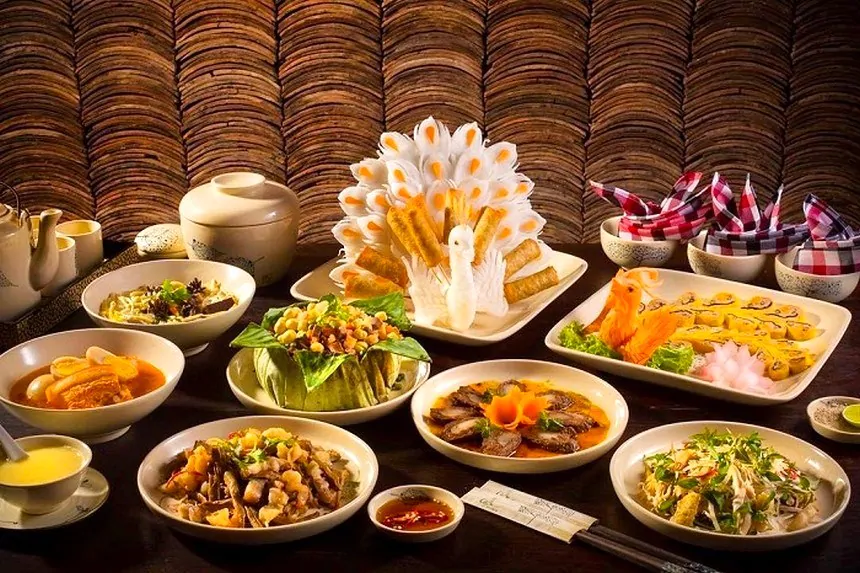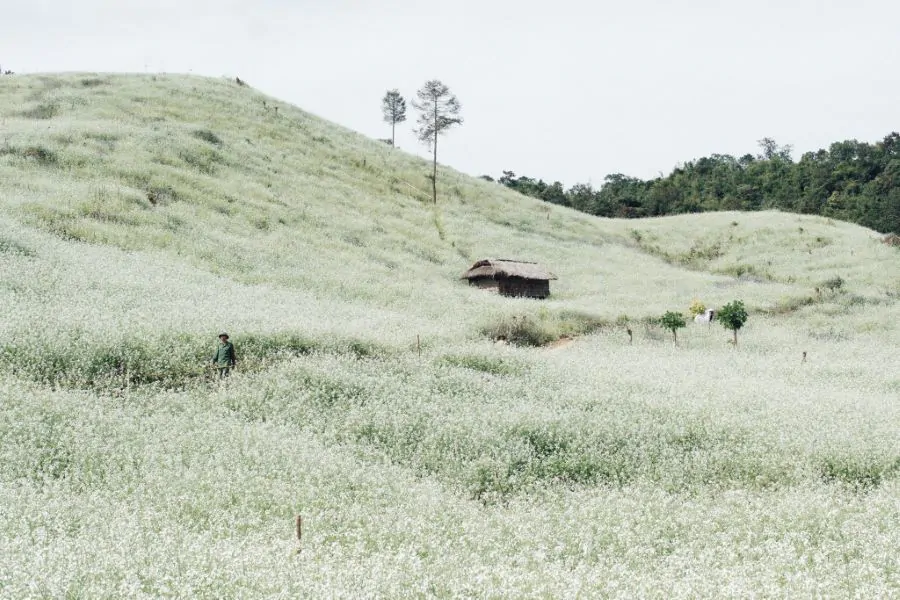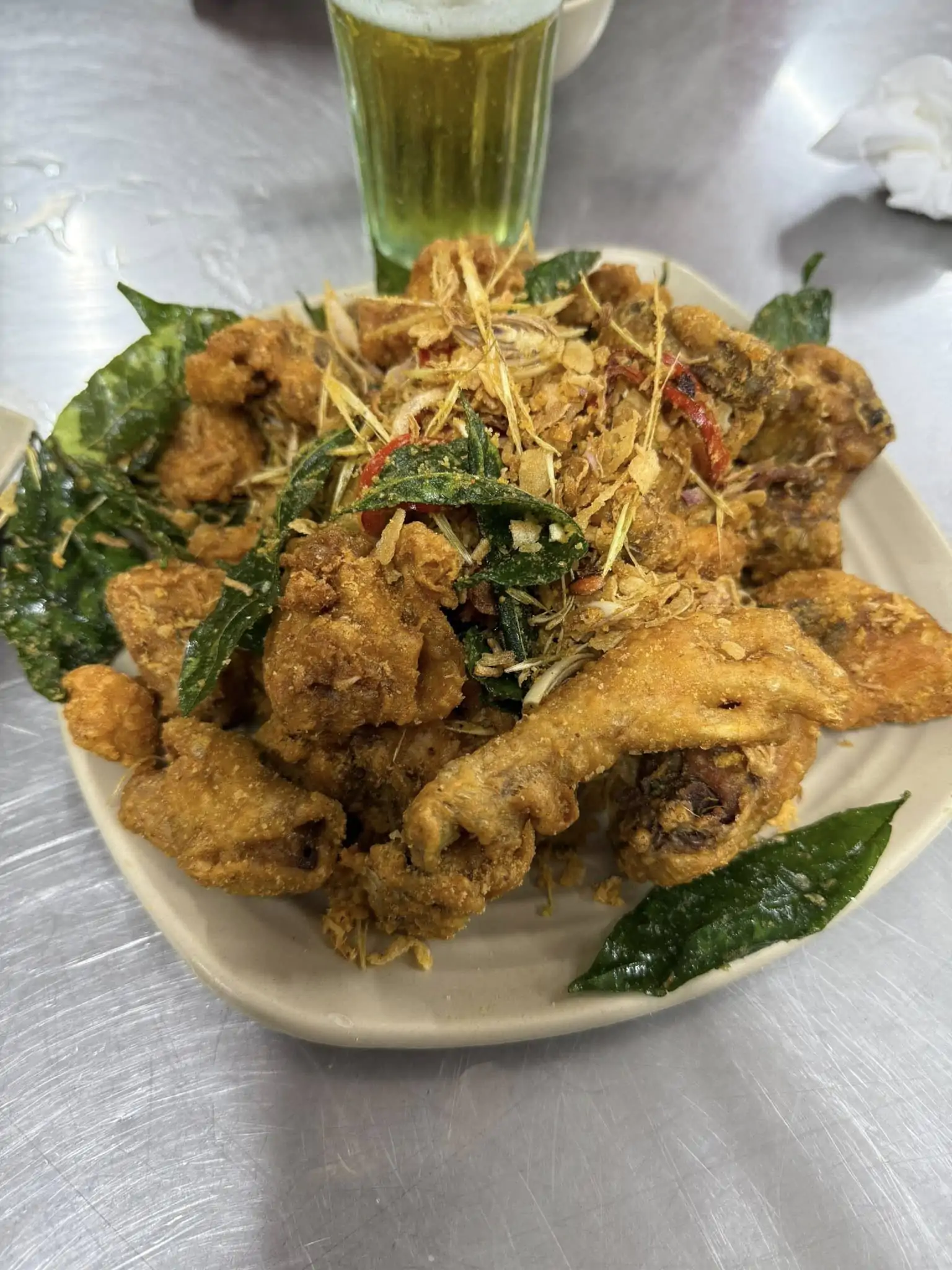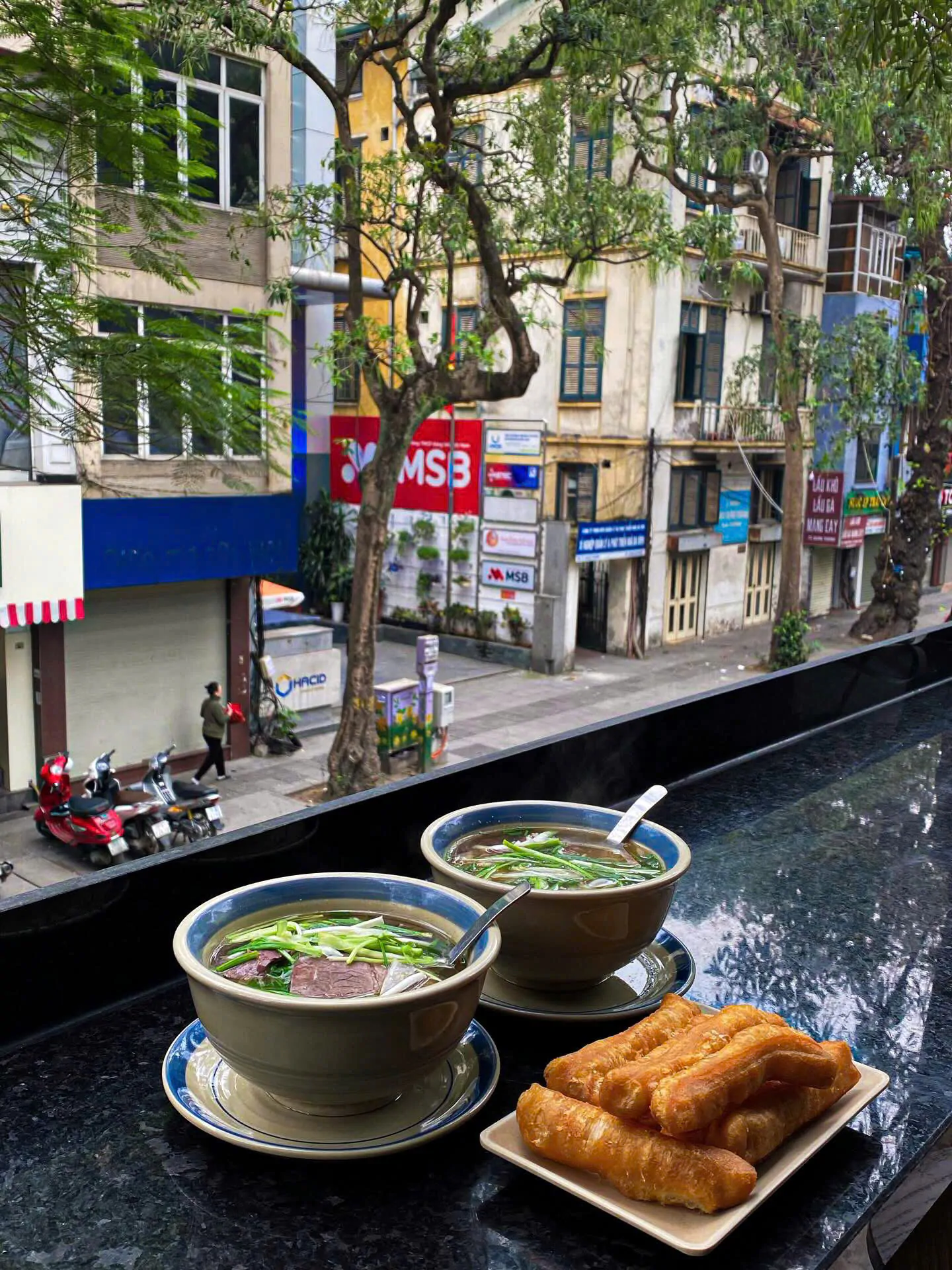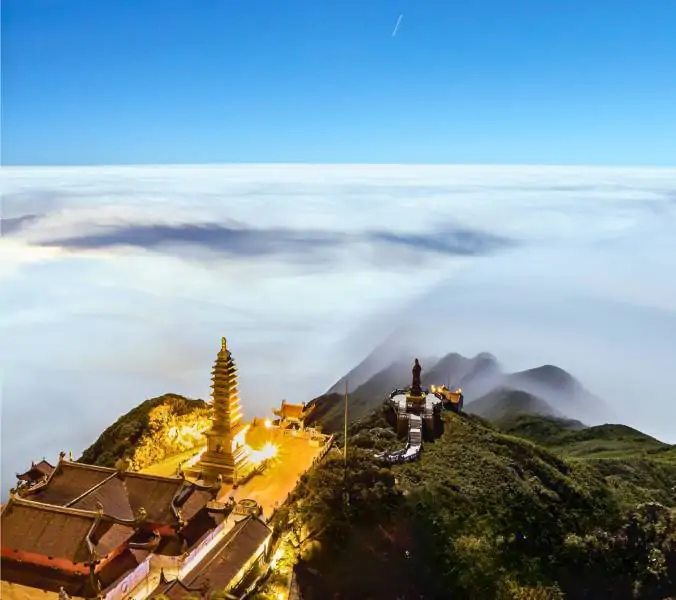Contents
Tu Dam Pagoda: A Comprehensive Guide to Hue’s Famous Ancient Buddhist Temple
1. Where is Tu Dam Pagoda?
- Address: No. 1, Su Lieu Quan Street, Truong An Ward, Hue City, Thua Thien Hue Province
- Opening hours: 6:00 AM – 6:00 PM

Tu Dam Pagoda is located in Hue, the historical capital of Vietnam. Nestled in the Thua Thien-Hue province, the pagoda is situated approximately 2 kilometers southwest of Hue’s city center, making it accessible for both locals and tourists. The exact address is on Su Lieu Quan Street, Truong An Ward, Hue City. Its proximity to other significant cultural and historical landmarks makes it a convenient and enriching addition to any itinerary exploring Hue.
2. The History of Tu Dam Pagoda in Hue

Tu Dam Pagoda, known in Vietnamese as Chùa Từ Đàm, has a rich history dating back to the 17th century. It was established by the renowned Zen master Minh Hoang Tu Dung in 1695, during the reign of Lord Nguyen Phuc Chu. Initially, it was a small thatched hut serving as a meditation site. Over the centuries, the pagoda has undergone various renovations and expansions, particularly during the reign of Emperor Gia Long, who provided significant support and resources for its development.
In the early 20th century, the pagoda gained prominence under the leadership of Venerable Thich Dong Tho. He expanded the complex and established Tu Dam as a center for Buddhist education and practice. The pagoda played a significant role during the Buddhist revival movement in Vietnam and became a hub for Buddhist activities, including training monks, holding lectures, and engaging in social welfare activities.
3. The Architecture of Tu Dam Pagoda in Vietnam

Tu Dam Pagoda is an architectural marvel that combines traditional Vietnamese and modern styles. The pagoda is known for its serene ambiance, elegant structures, and beautiful gardens. Its layout and design reflect the harmonious blend of spiritual and aesthetic elements.
3.1. Triple-Arched Gate (Tam Quan Gate)
The Tam Quan Gate is the main entrance to Tu Dam Pagoda and is one of its most distinctive features. This triple-arched gate symbolizes the three gateways to enlightenment: compassion, wisdom, and courage. The central arch is the largest, and it is flanked by two smaller arches. The gate is adorned with intricate carvings and inscriptions, showcasing the artistry and craftsmanship of the period. Passing through this gate, visitors are greeted by a serene courtyard leading to the main areas of the pagoda.
3.2. Tien Duong Area (The Front Hall)
The Tien Duong Area, or the Front Hall, serves as an important transitional space within the pagoda complex. This area is typically used for preliminary ceremonies and gatherings before entering the main worship halls. The Front Hall is designed with simplicity and elegance, featuring wooden beams, traditional roofing tiles, and open spaces that allow natural light to filter in. The hall often houses statues of Bodhisattvas and various Buddhist deities, providing a space for devotees to offer prayers and perform rituals.
3.3. The Main Hall and Ancestor House
The Main Hall, known as Chánh Điện, is the heart of Tu Dam Pagoda. This hall is where the primary worship activities take place. Inside, there is a large statue of Shakyamuni Buddha seated on a lotus pedestal, surrounded by smaller statues of other Buddhas and Bodhisattvas. The Main Hall is richly decorated with traditional Vietnamese lacquer work, gold leaf, and intricate wood carvings depicting scenes from Buddhist scriptures.
Adjacent to the Main Hall is the Ancestor House (Nhà Tổ), which is dedicated to the veneration of the pagoda’s founders and past abbots. This house holds ancestral tablets and relics, serving as a memorial for those who have contributed to the growth and prosperity of Tu Dam Pagoda. The Ancestor House is a place of reverence and reflection, where current monks and visitors can pay their respects to their spiritual predecessors.
3.4. An Ton Tower
An Ton Tower is a striking architectural feature within Tu Dam Pagoda. This multi-tiered tower stands as a symbol of the Buddhist doctrine and serves as a repository for sacred texts and relics. The tower is designed in the traditional Vietnamese style, with curved eaves, ornate carvings, and a harmonious proportion that conveys both strength and elegance. Visitors often come to the tower to meditate, offer incense, and enjoy the panoramic views of the pagoda complex and the surrounding area.
3.5. The Exhibition Room
The Exhibition Room at Tu Dam Pagoda is a modern addition that serves to educate visitors about the history, culture, and practices of Vietnamese Buddhism. This room displays a variety of artifacts, including ancient scriptures, ceremonial items, and historical photographs. The exhibition provides insight into the development of Tu Dam Pagoda and its role in the broader context of Vietnamese religious and cultural history. Interactive displays and informative panels make the Exhibition Room an engaging space for learning and reflection.

4. TOP Must-Visit Destinations Near Tu Dam Pagoda
While visiting Tu Dam Pagoda, there are several nearby attractions that offer additional insights into Hue’s rich cultural and historical heritage. Here are some top must-visit destinations:
- Imperial City (Citadel): The Imperial City of Hue, a UNESCO World Heritage Site, is located just a short distance from Tu Dam Pagoda. It is a vast complex of palaces, temples, walls, and gates that served as the political and cultural center of the Nguyen Dynasty.

Hue Imperial Citadel - Thien Mu Pagoda: Another iconic pagoda in Hue, Thien Mu Pagoda, is known for its picturesque location overlooking the Perfume River. It is one of the oldest and most significant religious sites in the region.

Hue- tour packages-https://vietnamdiscoverytours.com/ - Tu Hieu Pagoda: Located nearby, Tu Hieu Pagoda is a tranquil retreat surrounded by lush gardens. It is known for its serene atmosphere and historical significance as a training center for many prominent Vietnamese Buddhist monks.
- Dong Ba Market: For a taste of local culture and cuisine, visit Dong Ba Market. This bustling market offers a wide variety of goods, from fresh produce and traditional foods to handicrafts and souvenirs.
- Hue Museum of Royal Fine Arts: Housed in the former Long An Palace, this museum showcases a collection of artifacts from the Nguyen Dynasty, including royal clothing, ceramics, and decorative arts.
5. Where to Stay When Visiting Tu Dam Pagoda in Hue?
Hue offers a range of accommodation options to suit different budgets and preferences. Here are some recommendations for where to stay when visiting Tu Dam Pagoda:
- Pilgrimage Village Boutique Resort & Spa: This resort provides a peaceful retreat with a blend of traditional Vietnamese architecture and modern amenities. It is located close to the major attractions in Hue, including Tu Dam Pagoda.
- Indochine Palace Hotel: A luxury hotel in the heart of Hue, Indochine Palace offers elegant rooms and top-notch facilities. It is a convenient base for exploring the city and its cultural sites.
- Hotel Saigon Morin: With its colonial charm and historic significance, Hotel Saigon Morin offers comfortable accommodations and excellent service. It is situated near the Perfume River, providing easy access to the city’s attractions.
- Alba Wellness Resort By Fusion: This wellness resort offers a unique experience with its hot springs and spa services. It is an ideal place to relax and rejuvenate while being close to the cultural landmarks of Hue.
- Hue Serene Palace Hotel: For budget-conscious travelers, Hue Serene Palace Hotel offers affordable and comfortable accommodations. The hotel is centrally located, making it easy to visit Tu Dam Pagoda and other nearby attractions.
Tu Dam Pagoda is more than just a religious site; it is a testament to the enduring cultural and spiritual heritage of Hue. From its historical significance and architectural beauty to its serene environment and proximity to other cultural landmarks, Tu Dam Pagoda offers a rich and immersive experience for visitors. Whether you are a devout Buddhist, a history enthusiast, or a casual traveler, a visit to Tu Dam Pagoda will undoubtedly enrich your understanding and appreciation of Vietnamese culture and spirituality.




